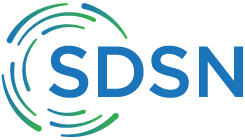Rationale and definition:
This MDG Indicator is defined as the percentage of the population living below the international poverty line, where the average daily consumption (or income) is less than $1.25 per person per day. The $1.25 threshold is a measure of extreme income poverty that allows comparisons to be made across countries when it is converted using purchasing power parity (PPP) exchange rates for consumption. In addition, poverty measures based on an international poverty line attempt to hold the real value of the poverty line constant over time, allowing for assessments of progress towards meeting the goal of eradicating extreme poverty.1
Disaggregation:
By sex, age, disability, urban/rural, and other qualifiers. Of particular importance is to identify: (i) the sex of the head of the household. Households headed by women may be more likely to experience extreme poverty. (ii) the percentage of children (under 18) living in poverty. Children are generally overrepresented among the extremely poor, and are explicitly highlighted in OWG outcome document target 1.2.
Comments and limitations:
The poverty rate has the drawback that it does not capture the depth of poverty; some people may be living just below the poverty line, while others are far below. To help capture disparities, data should as much as possible be disaggregated by sex, age, ethnicity, geography, and other attributes within a population. The SDSN also recommends an alternative indicator for extreme poverty in urban contexts, as the $1.25 poverty line is poorly adapted to urban environments where basic services (housing, water, energy, etc.) need to be purchased. In addition, the extreme poverty line of $1.25/day is the current threshold, but it may evolve, in which case the indicator should be updated.
Preliminary assessment of current data availability by Friends of the Chair:
B
Primary data source:
Household surveys, for example household budget surveys or other surveys covering income and expenditure.
Potential lead agency or agencies:
World Bank.
United Nations (2003).

